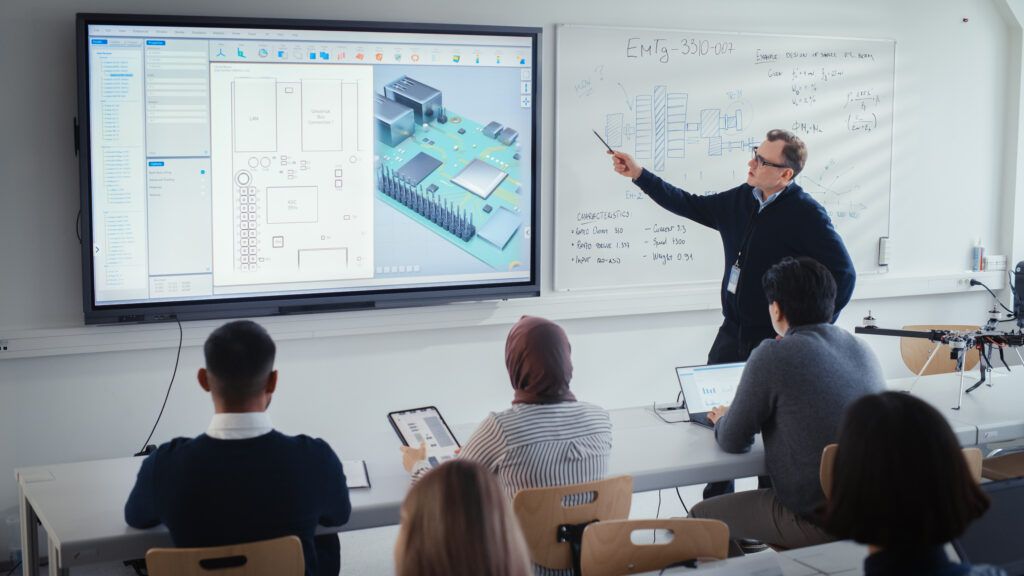Higher education institutions face unique network infrastructure challenges that set them apart from traditional enterprise environments. From supporting thousands of concurrent users across diverse departments to managing specialized classroom technologies, university NetOps and SecOps teams must balance performance, security, and visibility across increasingly complex network architectures.
The modern campus network serves as the digital backbone for everything from basic internet access to sophisticated research computing, live lecture streaming, and collaborative learning platforms. When network issues arise, they can disrupt the entire educational experience for students and faculty alike.
The Complexity of Campus Network Management
University networks present a unique mix of operational challenges that require specialized approaches to monitoring and management. Unlike corporate networks with more predictable traffic patterns and user behaviors, campus environments must accommodate a wider range of users and types of traffic.
Diverse User Communities and Access Patterns:
- Students, faculty, staff, and guests with varying network privileges and requirements
- Bring-your-own-device policies that create unpredictable endpoint diversity
- Seasonal traffic fluctuations during registration periods, finals, and campus events
- Research activities requiring high-bandwidth, low-latency connections
Department-Specific Network Requirements: Campus networks typically span multiple VLANs and network segments, each serving different academic and administrative departments with unique needs. Engineering labs may require high-throughput connections for computational work, while liberal arts departments might prioritize reliable video streaming for multimedia coursework. Understanding traffic flows between these departments becomes critical for capacity planning and troubleshooting network congestion issues.
The ability to visualize department-to-department network traffic provides network teams with essential insights into where bottlenecks occur and how different campus communities interact with shared network resources. This granular visibility helps engineers trace packets, verify VLAN assignments on switch ports, and quickly identify where traffic might be blocked or misrouted between departments.
Specialized Technology Requirements in Academic Environments
Modern universities have evolved far beyond basic internet connectivity. Today’s campus networks must seamlessly support sophisticated classroom technologies that are integral to the learning experience.
Multimedia and Streaming Infrastructure:
- Live lecture capture and broadcasting systems
- Campus television networks and digital signage
- Video-on-demand platforms for course materials
- Interactive whiteboards and wireless presentation systems
These technologies generate significant amounts of specialized network traffic, including IGMP (Internet Group Management Protocol) for multicast group management, PIM (Protocol Independent Multicast) for efficient content distribution, RTP (Real-time Transport Protocol) for media streaming, and SAP/SDP (Session Announcement Protocol/Session Description Protocol) for session management.
The challenge for NetOps teams lies not just in supporting this traffic, but in being able to tag, visualize, and set appropriate thresholds to ensure quality of service. When a professor’s smart board fails to connect during a lecture or campus TV experiences buffering issues, the network team needs immediate visibility into the underlying traffic patterns and potential congestion points.
The Critical Need for Host Intelligence and Tracking
Campus networks see constant device churn as students, faculty, and visitors connect and disconnect throughout the day. This dynamic environment creates significant challenges for security and troubleshooting efforts. NetOps teams need to understand not just what traffic is traversing their network, but the complete context around that traffic.
Effective host indexing capabilities allow network teams to maintain comprehensive records of network activity, including when a host was first observed on the network, what other systems it has communicated with, and the nature of those communications. This historical context proves invaluable when investigating security incidents, troubleshooting connectivity issues, or planning network capacity.
The ability to quickly retrieve the complete network history of a given IP address transforms reactive troubleshooting into proactive management. Instead of spending hours reconstructing communication patterns, network teams can quickly gain an understanding of a device’s behavior and identify potential issues before they escalate.
Beyond Traditional Enterprise Monitoring Solutions
Many universities initially attempt to address their network monitoring needs with solutions designed for traditional enterprise environments. However, these tools often fall short when confronted with the unique demands of higher education networks, with limitations such as:
- Inability to provide granular VLAN visibility for department-to-department traffic analysis
- Lack of specialized protocol support for educational technologies
- Insufficient context for dynamic device environments
- Limited historical tracking capabilities for forensic analysis
This gap between capabilities and requirements often forces NetOps teams to cobble together multiple tools or develop custom solutions. But this leads to increased complexity and operational overhead.
Key Capabilities for Higher Education Network Success
Successful network operations in higher education environments require monitoring solutions that address the specific challenges of campus networks:
Comprehensive VLAN and IP Group Management: The ability to import existing VLAN definitions and apply them to network reporting provides the granular visibility necessary for understanding inter-departmental traffic flows. This capability enables network teams to quickly identify congestion points and optimize traffic routing across campus network segments.
Advanced Host Intelligence: Robust host indexing and tracking capabilities provide the historical context necessary for effective troubleshooting and security analysis. Network teams can quickly understand device communication patterns and identify anomalous behavior before it impacts network performance.
Specialized Protocol Support: Native support for educational technology protocols ensures that classroom and multimedia systems receive appropriate monitoring and quality of service management. The ability to tag, visualize, and set thresholds for multicast and streaming traffic helps maintain the reliability of critical educational services.
Integrated Approach to Network Visibility: Rather than forcing teams to manage multiple disparate tools, effective higher education monitoring solutions provide unified visibility across all aspects of network operations, from basic connectivity to advanced protocol analysis.
Building Resilient Campus Network Operations
Campus networks serve a mission-critical role in the educational process; downtime directly affects student learning outcomes and institutional reputation.
By implementing monitoring solutions designed specifically for the unique challenges of campus environments, universities can transform their network operations from reactive troubleshooting to proactive management. This shift enables NetOps teams to anticipate issues before they affect users, optimize network performance for educational workloads, and provide the reliable connectivity that modern higher education demands.
To see how better network intelligence and visibility can improve your campus operations, book a Plixer One demo with one of our engineers today.



